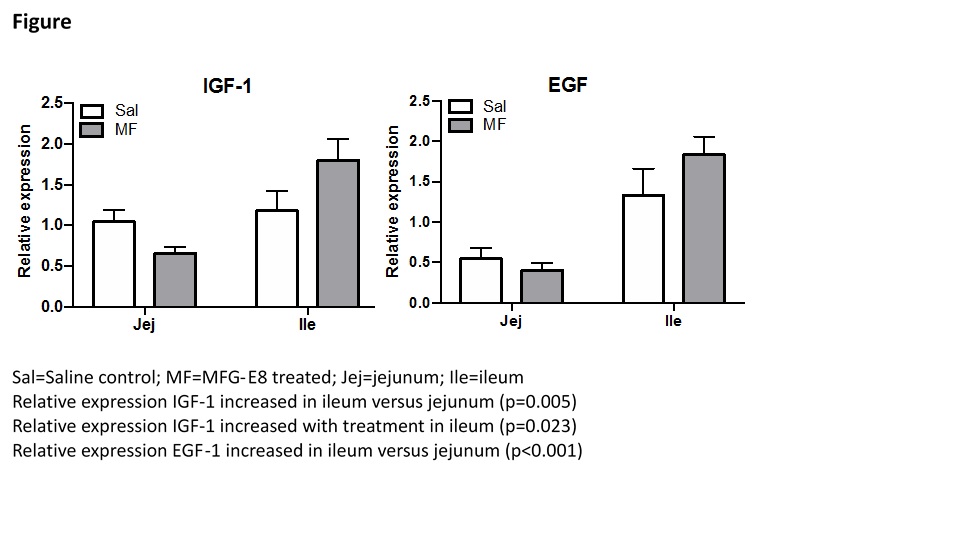Introduction: Whether acquired or congenital, short bowel syndrome (SBS) remains the leading cause of intestinal failure in neonates. Structural adaptation is essential for survival including, uniquely for neonates, the potential for intestinal growth in length. Milk fat globule epidermal growth factor-8 (MFG-E8) is present in human milk and known to increase intestinal fat absorption. It has homology with epidermal growth factor (EGF), which is known to enhance structural adaptation, and so the potential role of MFG-E8 treatment in neonatal SBS was explored.
Method: Using neonatal piglets aged 2-5 days, two surgical models for SBS were studied, both with 75% total intestinal resection, but either distal resection with jejunal-colonic (JC) anastomosis, or mid resection with jejunal-ileal (JI) anastomosis. Piglets were maintained on parenteral nutrition and trophic feeds to enhance adaptation, with 5mg/kg-d of MF-EG8 or saline (control) given daily by gastric feeding tube. On day 7, bowel length was measured and tissue collected for histology and quantitative real-time polymerase chain reaction analysis of mucosal transcripts including trophic peptides, fat transporters and markers of proliferation. Comparisons utilized student t tests/ANOVA.
Results: All piglets gained equivalent weight during the trial (p=0.65). JI piglets demonstrated significant intestinal lengthening (p<0.001), that was more than 2-fold greater in ileum than jejunum (p<0.001). Lengthening was further enhanced by 22% in ileum following MFG-E8 treatment (p=0.03). In contrast, JC piglets did not increase intestinal length and did not benefit from treatment. In JI piglets, insulin like growth factor-1 (IGF-1; p=0.004) and EGF (p<0.001) expression were increased in ileum and, expression for both was enhanced by treatment in ileum as compared to jejunum (see Figure). In addition, EGF-Receptor (p=0.020) and claudin-2 expression (p=0.026) were also increased in ileum. No other differences in transcripts were noted.

Conclusion: MF-EG8 demonstrated site specific trophic effects, only noted in a JI model with remnant ileum. This may limit the utility of this treatment for SBS, where loss of ileum is common. However, the mechanisms of these site specific effects and the roles of IGF-1 and EGF in gut growth warrant further exploration in neonates, particularly given that developmentally relevant conditions, like necrotizing enterocolitis, predominantly target the ileum.
.jpg )